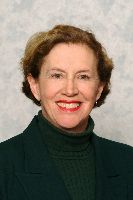Senior Advisor at Rowe Neurology Institute, Elizabeth S. Rowe, PhD, MBA recently traveled to Washington, DC to participate in MedPAC’s hearings on payment policy. Dr. Rowe’s comments follow:
Comments for: The context for Medicare payment policy 090612
Omitted from last year’s Report is a key cause of the increase of cost of Medicare expenditures: the effect on rising costs of the shift of physicians to hospital employment was not included in the 2012 Report. It is now clear that it is the single most important cause of rising costs that can be easily remedied. Payment policies must be changed to incentivize the low cost providers, and keep them from going out of business.
RECOMMENDATION:
Outpatient medical services payments should be the same regardless of setting, including both physicians and ancillary testing facilities.
The level of these payments should be sufficient to incentivize the continued existence of low cost physician private practices and low cost free standing facilities for imaging, sleep studies, and all other outpatient testing and services that do not require hospitalization.
PROBLEM
- Physicians are rapidly being recruited away from private practice and into hospital employment (in the hospital outpatient department or HOPD).
- The disparate payments for the same services in different settings are driving up costs for both Medicare and beneficiaries with no clinical benefits.
- If this trend continues the result will be a system of self-referring high cost HOPD monopolies for services that could better be provided in the lower cost private practice outpatient setting.
The massive shift of physicians from private practice to hospital employment, coupled with the disparate payment schedules, has several serious aspects and consequences.
- Payments to hospital OPD’s for office visits are 80% higher than for identical visits to privately owned physician offices (MedPAC March 2012 report). These higher payments by CMS also lead to higher co-pays by beneficiaries.
- Payments to hospital outpatient departments for imaging, sleep studies, and other services are 2-5 times higher than to privately owned free standing facilities. For cardiology example see Same Doctor Visit Double the Cost, WSJ Aug 27, 2012.
- Private practitioners and free standing outpatient testing and imaging centers are being driven out of business by low payments.
- Captive hospital employed physicians refer their patients to their high cost employers’ hospital owned testing centers, facilities and specialties, in a self-referral cycle in which physician salaries are linked to “production”.
- The existing “market” in which patients have choice of primary care physicians, and in which their primary care physicians have a choice for further referrals, based on their professional judgment, is rapidly being destroyed because of the lack of choice of hospital employed primary care physicians in their referral behavior. Once the shift of primary care physicians in an area reaches a critical mass, the free standing private practice “market” will be gone. Patients will no longer have a lower cost physician or facility to choose from.
- This monopolization of outpatient care by HOPD’s also creates a quality of care issue because patients will no longer be referred to the best available care in their areas, but instead to whatever specialist their HOPD system happens to have onboard. And if the trend toward concierge medicine continues, the best physicians will be the ones who are not part of these monopolies run by administrators and will not be available to Medicare beneficiaries.
REASONS FOR THE SHIFT OF PHYSICIANS INTO HOSPITAL EMPLOYMENT:
- Hospitals are clearly incentivized to employ physicians because of all of the above; especially the capture of the physicians’ downstream referrals.
- Physicians are incentivized to accept hospital employment because of the lowering payments in private practice to the point that private practice is untenable.
- Physicians are also incentivized by the salary premiums that hospitals can offer due to 1, 2 and 3 above.
- Physicians may not want to deal with the business aspects of being in private practice, which has been made increasingly burdensome and with ACA is expected to become worse. Costs are skyrocketing while reimbursements are literally shrinking.
- Specialists are forced into hospital employment when their referral base is eroded due to the change to hospital employment of their referring physicians. They are incentivized to go into hospital employment by both reduced payments and reduced referral base.
WHAT CAN BE DONE TO CHANGE THIS ADVERSE TREND?
- Equalize payments for ALL outpatient services to make them independent of setting, as has already been recommended for office visits.
- Set the new equal payments to be sufficient for private practicing physicians so they have a choice, and can stay in or go back to private practice if they prefer. Increase payments
for all outpatient services including imaging, sleep, and other testing for free standing outpatient facilities so that they can also stay in business. - Immediately include hospital HOPD’s in Stark rules that require patients to be told about available alternative facilities and specialists whenever they are being self-referred by the hospital employed physician.
- Increase payments to hospitals for those services that they are uniquely required to provide, and which are now being subsidized by the overpaid outpatient services. Pay them the real cost of what we really need them to provide: trauma, intensive care, etc.


